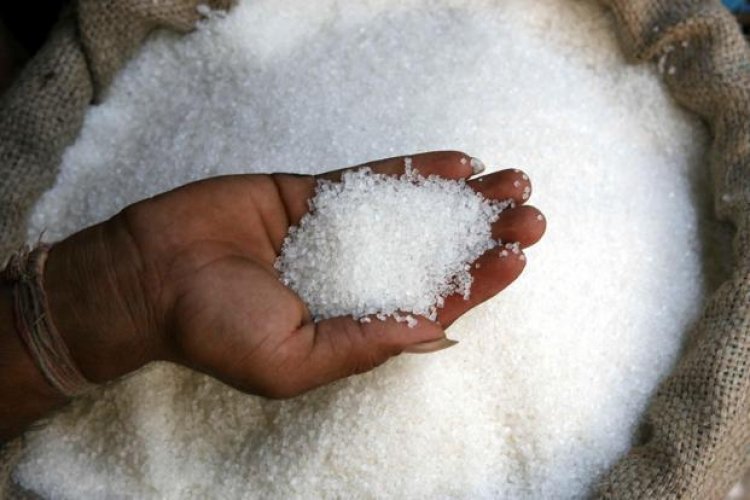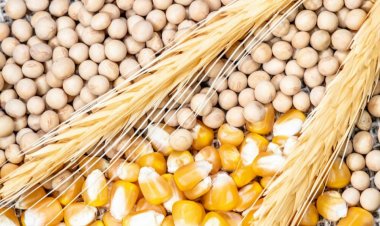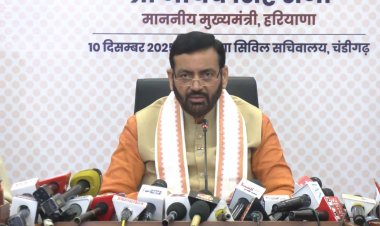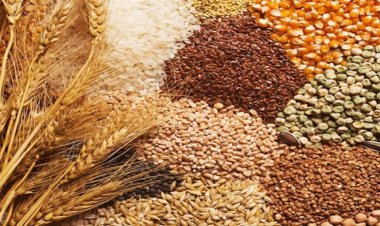Sugar production down by 9.65 lakh tonnes, Ethanol blending till May stood at 12.48 per cent
Sugar industry sources say that if there was no ban on making ethanol from sugarcane juice and B-heavy molasses in December, then a blending level of 15 percent could have been achieved.

In the current sugar year (2023-24), the sugar production has been 321.5 lakh tonnes which is 2.92 percent less than the sugar production of 330.90 lakh tonnes last year (2022-23). According to the industry data till May 31, 2024, sugar production this year has been less by 9.65 lakh tonnes. At the same time, according to industry estimates, the opening stock of sugar on October 1, 2024, in the new year will be around 85 lakh tonnes, which is much more than the average consumption of three months. In such a situation, if the government had not banned the production of ethanol from sugarcane juice and B-heavy molasses in December 2023 in anticipation of a fall in sugar production, then while the average blending of ethanol in petrol would have reached 15 percent, it would also be economically beneficial for the sugar industry. Till May, the level of ethanol blending has been only 12.48 percent.
Along with this, the sugar industry says that due to increase in Fair and Remunerative Price (FRP) of sugarcane by the government and other costs, the cost of sugar production has increased by about Rs 250 per quintal. Therefore, sugar's minimum selling price (MSP) should be increased from the current Rs 31 per kg to Rs 42 per kg. The government had increased the MSP of sugar to Rs 31 per kg in February 2019 and it has remained at the same level even after more than five years.
Industry sources told RuralVoice that due to the hot summer and Lok Sabha elections this year, sugar consumption has increased and it is estimated to reach 290 lakh tonnes this year as against the average of 275 lakh tonnes. But despite that, the sugar industry had the potential to export or convert 20 lakh tonnes of sugar into ethanol which has not been utilised. Due to this, the working capital burden on the industry and the carryover cost of sugar stock has also increased.
Along with this, due to increased supply in the global market from Brazil, the export of Indian sugar is also no longer profitable. However, the government had put the export of sugar on the restricted list last year, which was extended till 31 October 2024 and hence did not issue the export quota for the current season.The global price of white sugar is 19.25 cents, which comes to around Rs 40 per kg. Whereas the ex-factory price of refined sugar in the domestic market is Rs 3900 per quintal. Therefore, exporting is no longer profitable.
This move of the government has also affected the ethanol blending program. In the ethanol supply year (1 November 2023 to 31 October 2024), ethanol blending level has been 12.48 percent.According to the data of government oil companies, they have purchased 327.31 crore litres of ethanol till May 26, 2024. Whereas the requirement for the whole year is 825 crore litres. Out of this, the sugar industry has supplied 165.37 crore litres which is 50.52 percent of the total supply. At the same time, the grain sector has supplied 161.96 crore litres which is 49.48 percent of the total supply. Till the said date, the level of ethanol blending in petrol has been 12.48 percent.
Sugar industry sources say that if there was no ban on making ethanol from sugarcane juice and B-heavy molasses in December, then a blending level of 15 percent could have been achieved. However, there has been a 15 percent blending level in the month of May. But this has been achieved in only one month. The government has set a target of 20 percent ethanol blending by 2025.
As far as sugar production is concerned, Maharashtra is on top with a production of 110.20 lakh tons. Whereas Uttar Pradesh's sugar production has been 103.65 lakh tons. In the current season, Maharashtra's production has increased by 4.90 lakh tons whereas in Uttar Pradesh, sugar production has declined by 1.15 lakh tons compared to last year.At the beginning of the season, there were fears of a decline in sugar production in Maharashtra, but due to good rains since October, sugarcane crop benefited and more sugarcane was available to the mills and resulted into higher sugar procuction.



 Join the RuralVoice whatsapp group
Join the RuralVoice whatsapp group









































